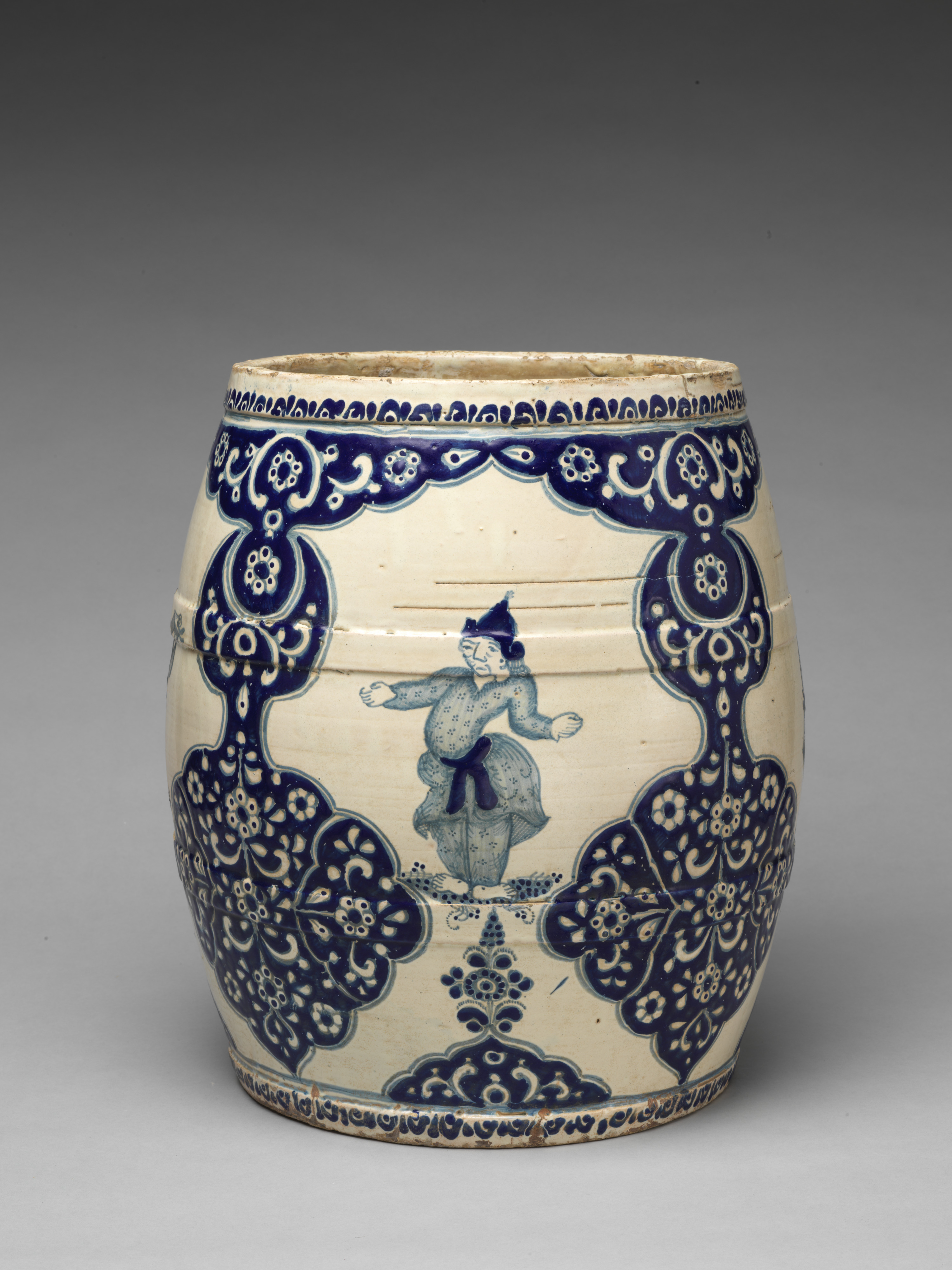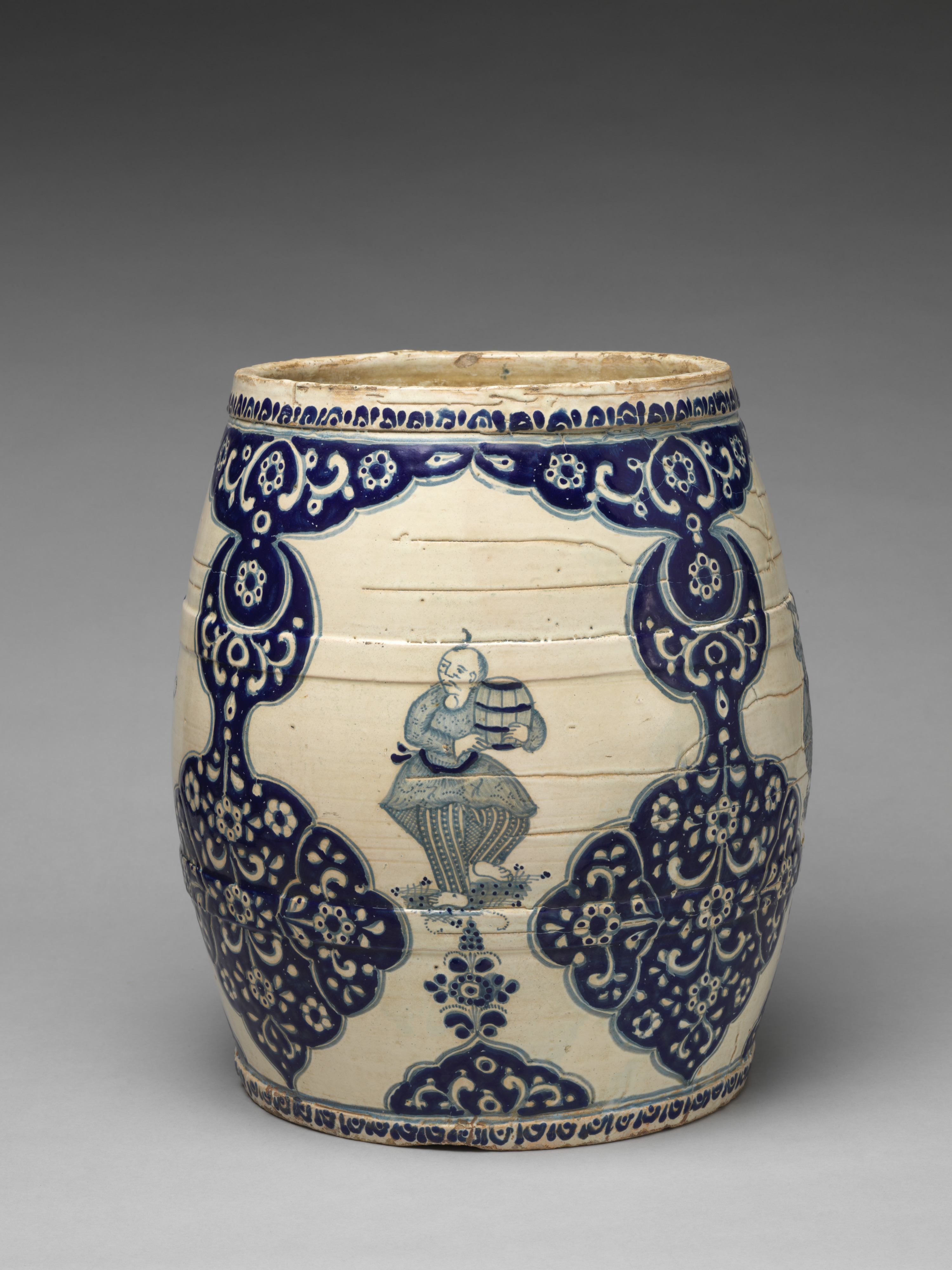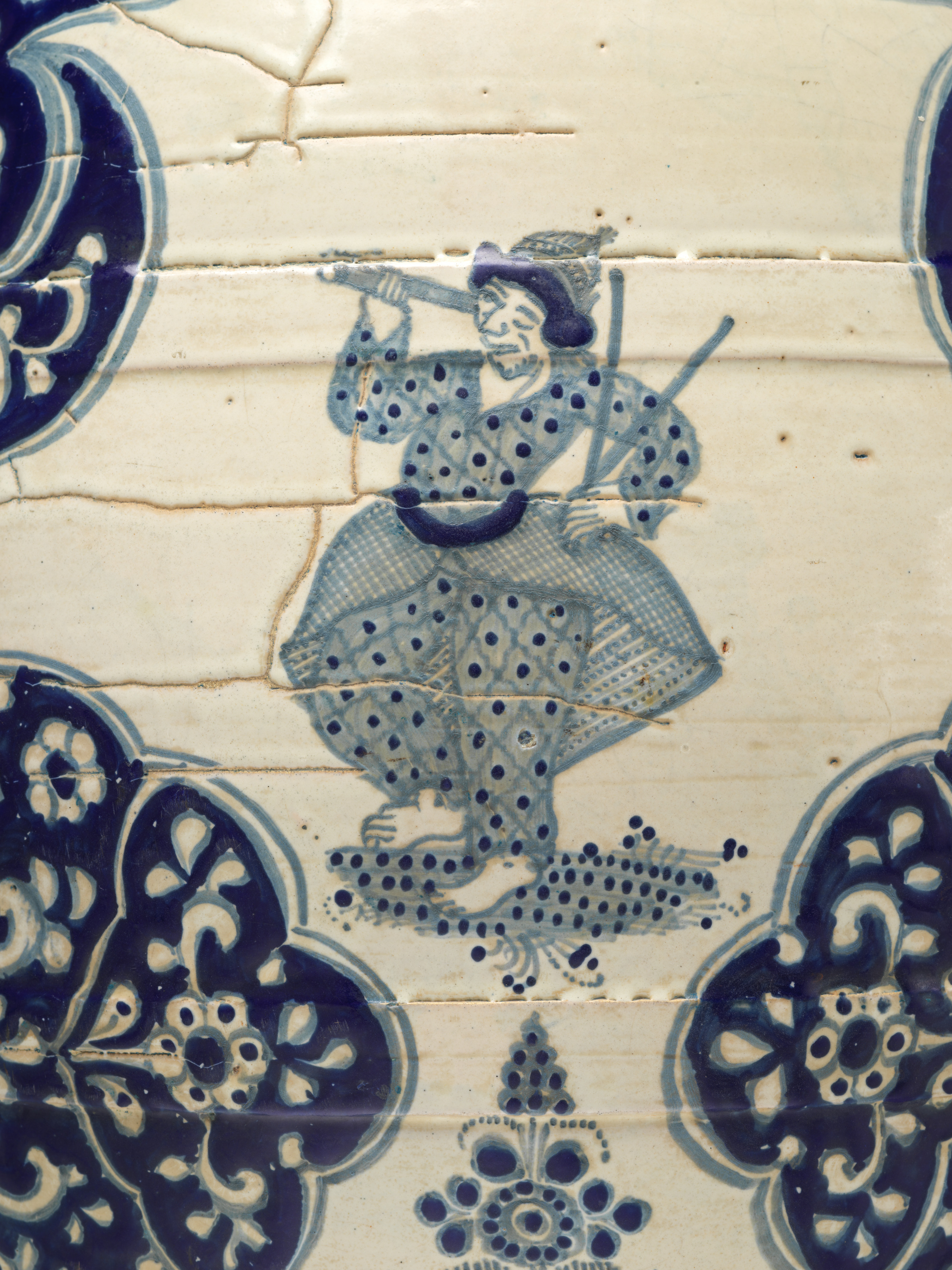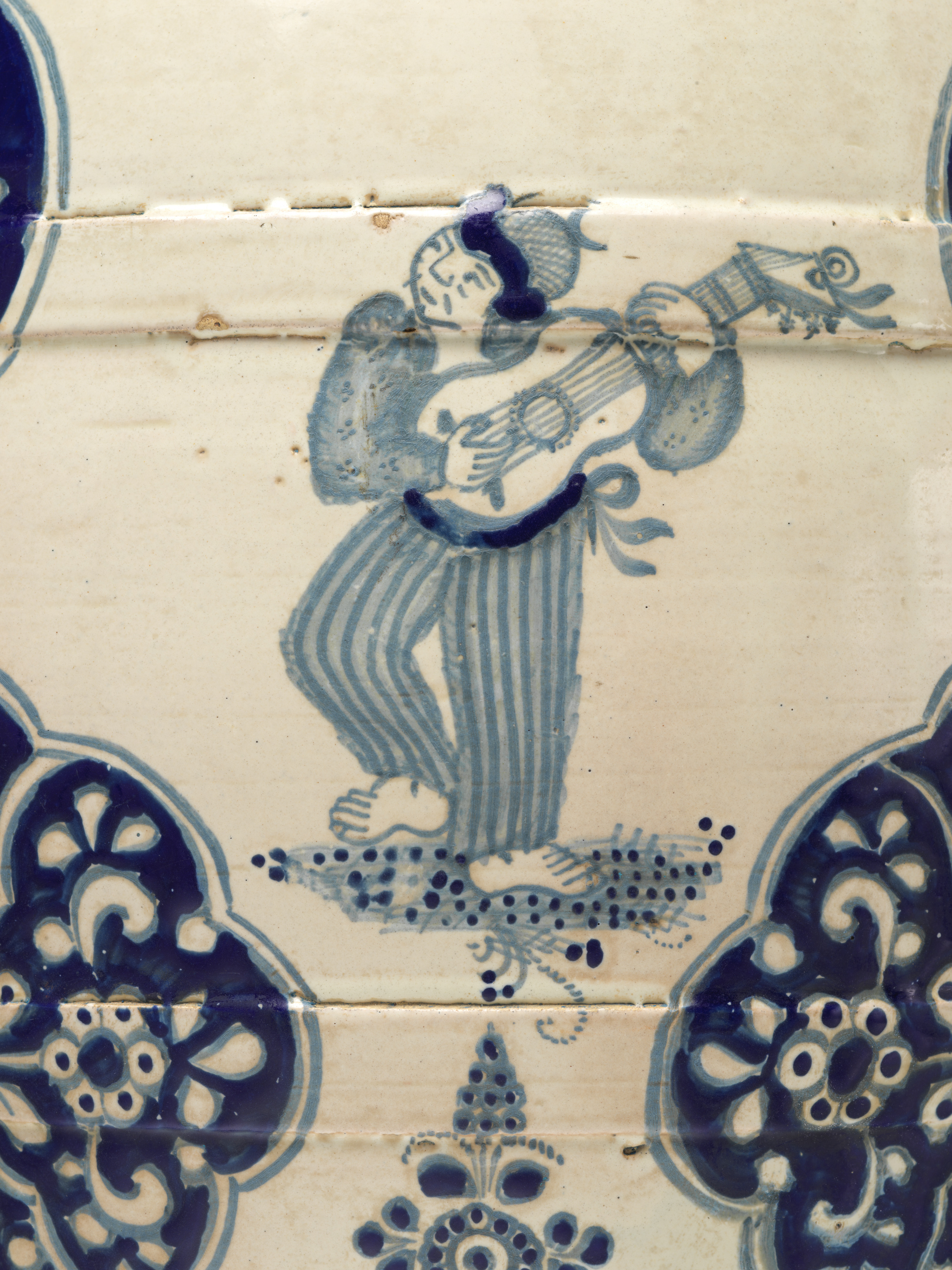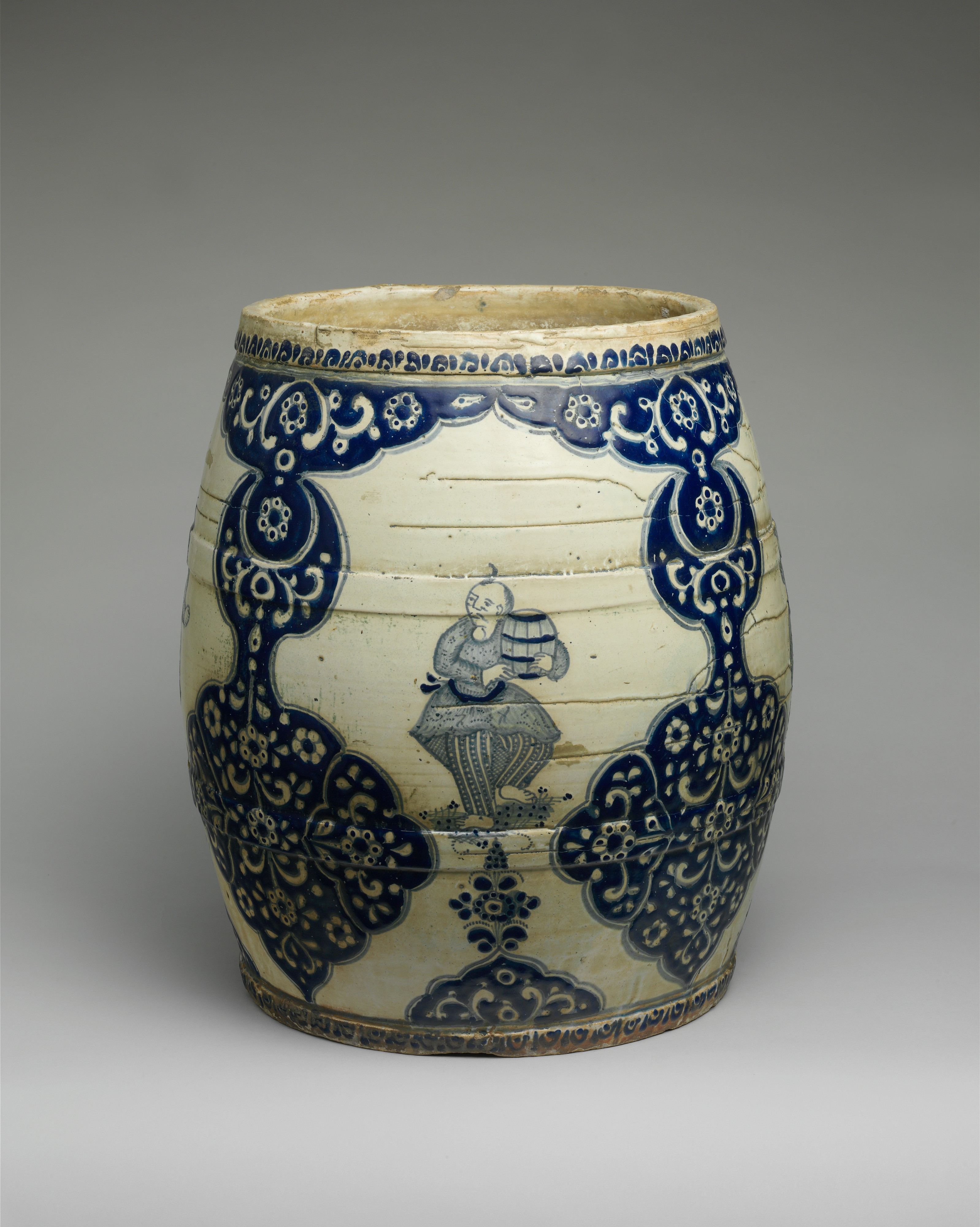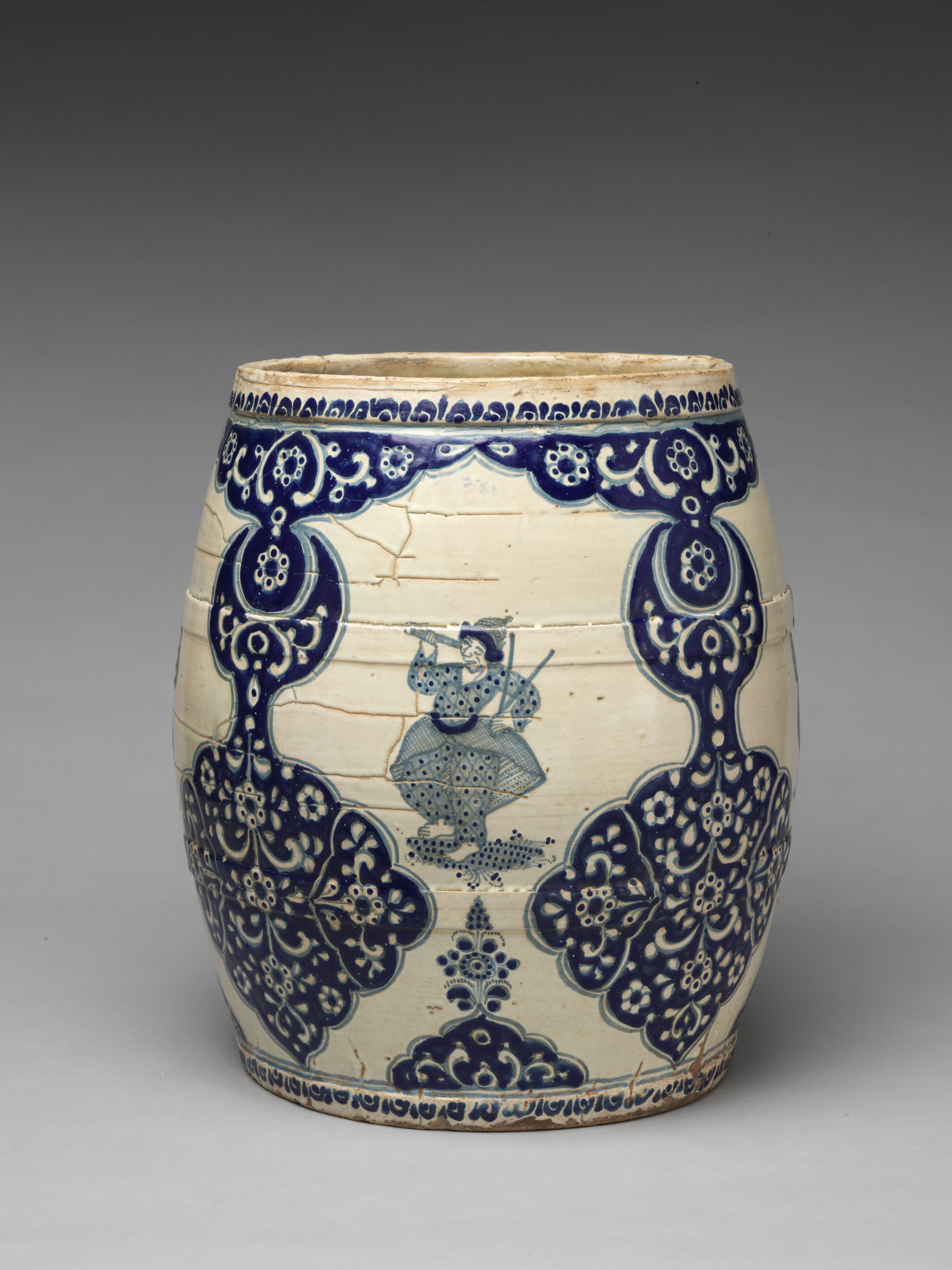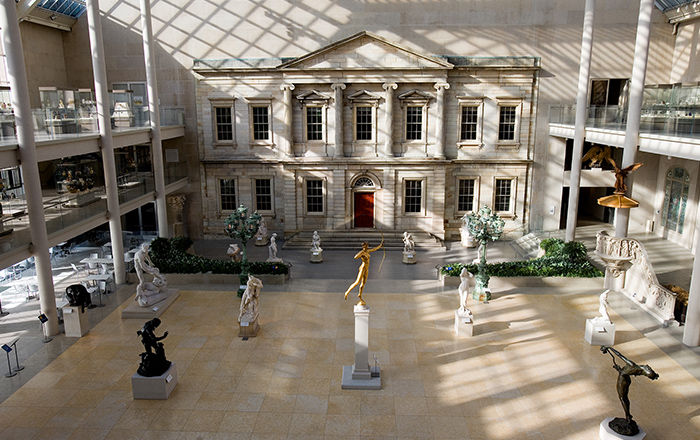Barrel-shaped planter with Chinese figures
Not on view
The production of a distinctive Chinese-inspired style of tin-glazed earthenware was already well established in the city of Puebla de los Angeles when, in 1682, the ordinances of its potter's guild were revised to reflect existing practice. One new clause stipulated that the painting of fine ware (loza fina) "must imitate that of China" and be done in blue. The guild ordinances document not only the explicit intent to imitate Chinese porcelain, but the professional resolve to control and authorize material aspects of the process, thereby identifying decoration in blue as its defining trait. Puebla potters also copied the distinctive shapes of Chinese porcelain. The barrel-shaped form of this large, thickly potted earthenware planter is reminiscent of ceramic garden seats. Its blue-and-white ornamentation is likewise inspired by imported porcelain, while its figural decoration, which conjures four Chinese types or occupations, is indebted to European Chinoiserie.The fanciful figures are separated by four pendant lappets in blue wih floral sprays in white reserve. The outlandish dress of the barefooted figures--a musician, a dancer, a merchant, and a mariner--markes them as "foreign," if not specifically Chinese in every instance. The ethnicity of the mariner, who brandishes a navigation compass and peers through a telescope, is more ambiguous than the other three figures. Such imprecision is consistent with the tendency in New Spain to identify nearly all Asians (and Asian goods), regardless of their exact origin, as "Chinesee." Characterized as entertainers and maritime traders, their representation on a flowerpot all but assures that they were read as amusing or even comical figures, well-suited for the adornment of a garden or place of recreation.
--Ronda Kasl
This image cannot be enlarged, viewed at full screen, or downloaded.
This artwork is meant to be viewed from right to left. Scroll left to view more.


